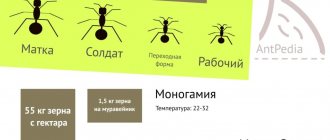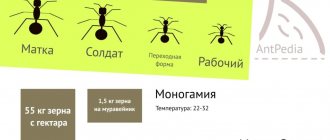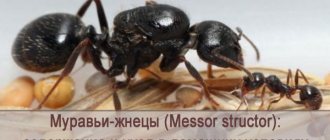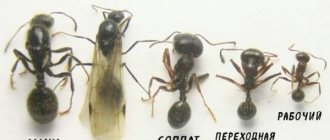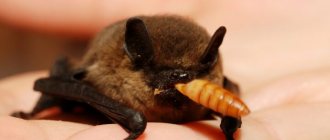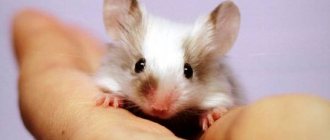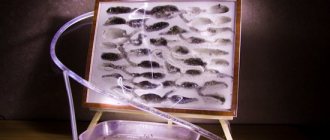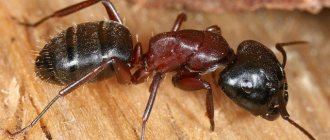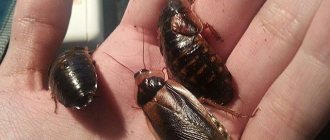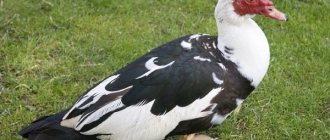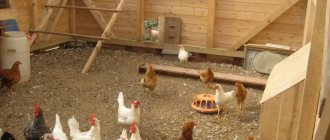Hello! This week I bought the first formicarium with a colony of reapers: a queen and 30 workers. So the question immediately arose of how to populate ants in a formicarium from a test tube. Next, I will share the experience and emotions that I received during the week. They are sweethearts! Before starting, I studied many forums and VK groups in order to understand how to relocate ants quickly and without hassle. So read the article to the end and find out my story, which will save the life of the colony and save time, money, and nerves. Especially if you are a beginner.
How to get and where to get ants for a formicarium?
Reaper ants or steppe ants are one of the easiest species to keep for beginners. At the head of such a colony is a queen, which lays eggs and contributes to the growth of the family.
How to get and where to get ants for a formicarium:
- Buy a small colony, which is sold in small tubes. Typically this is a queen along with 10, 20 or 30 workers.
- If you are not ready to spend money on purchasing a colony, you can do the following. In nature, females and males mate in spring. These ants, unlike the usual ones, have wings. Later, after fertilization, the queen gnaws off her wings, descends underground, or climbs under a stone or dry tree. There the process of digging holes and laying eggs begins. During the mating period, it is necessary to get out into the steppe and look for similar insects with wings. Fertilization of the uterus occurs only once in a lifetime; it works with the accumulated sperm capacity, laying eggs. Some time after fertilization, the males die. Next, the queen begins laying eggs.
- As soon as you have a queen, you need to transplant it into a test tube with moistened cotton wool, and place there a small piece of walnut, the size of a match head, and a few dead mosquitoes. This is because ants in nature also eat dead insects to provide themselves with protein.
The most remarkable thing is that the whole family consists of females, males, and workers. Workers are females, but with underdeveloped reproductive organs that cannot produce offspring. They are the ones who do the cleaning, some are nannies, and feed the offspring. In such a family there are individuals who carry out cleaning, carry dead insects and debris to a designated place so as not to clog the formicarium or nest. It is worth noting that entomologists consider ants to be the most developed of all insects. It is believed that an anthill is a single whole organism, each of which has its own purpose and purpose. The work is distributed, everyone knows what to do. The queen lays eggs, other insects feed them, another caste cleans and protects the anthill from attack by other insects.
Murashka
Features of appearance and structure
Reapers have developed polymorphism. The colony is divided into classes:
- Uterus (15 mm);
- Worker ant (4-9 mm);
- Transitional form (10 mm);
- Soldier ant (11 mm).
The connection between the abdomen and the rest of the body is thin and seemingly fragile. There is evidence that the uterus died after falling from a small height. It doesn't sound plausible. There is a sting, but it is reduced. They don't use it.
There is a transitional form between the soldier and the working individual. They are formed due to a lack of protein for the development of full-fledged soldiers. They are already developing massive occipital muscles, which are responsible for the work of the lower jaws.
The species is not aggressive; the soldiers are essentially millers. With their huge jaws, the ants grind large seeds into flour, which is then mixed with saliva. Both ants and larvae feed on the mixture.
What to feed ants at home?
Of course, harvester ants can exist peacefully if they are fed with poppy and sunflower seeds, but in the presence of protein, the family develops much faster, and the individuals are larger in size.
What to feed ants at home:
- Don't be surprised if the first insects are small. This is understandable, since the queen spends her own energy feeding and raising them, which may not be enough. The next generation will be larger due to additional feeding.
- Add grains from time to time, and do not forget about dead insects. These could be small cockroaches, worms, or mosquitoes. This food can be found at any pet store or ordered online. Nowadays, keeping a formicarium is quite popular; finding food for ants should not be a problem.
- Buy food in special stores. Canary mixture is also suitable.
Ants
What types of anthills are there?
So, a home anthill is called a formicarium, it can be compared to an aquarium, only instead of water and fish, we see filler and goosebumps. There are simple and complex systems in which favorable conditions for the life of insects are automatically created, the correct temperature, humidity, and lighting are maintained.
A formicarium can have completely different sizes, from small tabletop ones to huge ones that occupy large areas, it all depends on desire and capabilities. Regarding the filler, it can also be different, for example, gypsum, a mixture of soil and sand, gel.
There are quite popular models “Colosseum” and “Cubus”. The latter are available for sale in the form of a cylinder, cube or display that has double walls. The emptiness of melon products is filled with filler, which can be of different colors. In this filler, goosebumps build their passages and chambers. Regarding the price of such products, it is quite high, about 3 thousand rubles.
There are more affordable models, for example, anthills with helium filler. They are very similar to aquariums, the filling of which is a transparent gel. These formicariums are easy to care for; just open the lid once a week for ventilation. Their approximate cost is 50 rubles.
If we talk about such a filler as gel, it is completely safe for insects, just like for people. In addition to the fact that the gel is a filler, a habitat where goosebumps build their passages and chambers, it also acts as a nutrient medium.
Gypsum trusses can be called the most popular. They come in different shapes, sizes and are painted in all sorts of colors. The cost of such formicaria is on average 700 rubles.
Reaper ants: maintenance and care at home
Your goal is to place the tube containing the queen bee in a dark place and check once a week. In about a month, the family will increase in size. On average, you will see about 30 new individuals in one month. Later, the insects will begin to develop much faster, because the queen will have assistants who will look after the new eggs, feed them and take out the trash.
Reaper ants, maintenance and care at home:
- To develop a colony, you need a cozy formicarium or farm with a large number of passages. Do not rush to open all the compartments at once, freeing them gradually as your family grows. This is necessary so that the ants do not get lost.
- Excessive space can cause death, severe stress, which will negatively affect the strength of the family. Ants need constant moisture. Despite the fact that reapers live in the steppes, where it is quite dry, they still choose places where moisture accumulates. Therefore, be sure to put cotton wool soaked in water into the chamber to maintain high humidity. Do not place the truss near a window, on a windowsill, or in places where there is a draft. Ants do not live well on the balcony. Choose a cozy, shady place where little insects will disturb you.
Goosebumps
Keeping Ants
We welcome you, dear buyer! You have just purchased an ant farm, so let’s figure out together how to assemble a formicarium, as well as how to care for ants.
Our company's formicariums are designed for long-term maintenance of ant colonies. The designs are lightweight, easy to assemble, transparent - this, of course, makes it convenient to observe the life of your small pets and the opportunity to photograph and film them. In the manufacture of ant dwellings, only reliable acrylic (3 mm thick) is used, which will not bend under the influence of temperature differences.
Even a child can handle assembling our farms!
Acrylic is multi-layered, so moisture will never be a problem. For easy moisturizing, the design includes a sponge - it absorbs water. Moisture entering the formicarium through special windows protected by a stainless mesh is evenly distributed between the layers of acrylic under the action of capillary effect. But some farms have gypsum, which serves to increase humidity (for example, with gypsum, the humidity in a farm reaches 100%, without it - up to 80%), which can be useful when keeping demanding tropical species of ants. Farms hold moisture well, so by thoroughly moistening the formicarium, you can leave it without care for up to 10 days, and nothing will happen to the ants! More precisely, they will definitely not die from dehydration. Combined structures (acrylic + gypsum) can be recommended for keeping ants of the subfamily Ponerinae, which are more accustomed to living in a gypsum nest. In the manufacture of such structures, we use only high-quality gypsum (G16 - G19), which does not collapse during long-term use.
Any formicarium is unthinkable without an arena, because if it imitates the anthill itself, then the arena is the space outside the nest. The ants carry garbage into the arena, where you can place a drinking bowl and decorations, as well as throw food there. Like all living chambers, the arena is made of clear acrylic, allowing you to watch the ants work, explore and search for food.
Colonization of ants
The formicarium is already there, so it’s time to breathe life into it! We sell starter colonies that travel in incubators. In fact, there is nothing better than an incubator tube for a small colony of ants, because it maintains the ideal set of conditions for a good start. In a test tube, ants feel the same way as in the first initial chamber of their native anthill, if, of course, you provide them with darkness (this is not necessary, but desirable) and peace. In such a simple dwelling, a colony can develop for a long time without relocation, but the problem is that it is difficult to feed ants in a test tube when there are already about twenty of them. After all, the ants are trying to protect their nest from invasion, they run out and don’t let them feed them! Then you need to connect the arena. Fortunately, our farms have the ability to connect incubators directly to the formicarium arena, so you simply insert a test tube into a special hole on the side, and the ants are able to go out for food and take out trash. But these are such suspicious insects that they are constantly expecting an invasion from the outside, so it is very important to make sure that they are not afraid of the fact that the neck of the test tube is constantly open. To do this, a very simple technique is used: small pebbles are placed in the arena near the entrance, sand or coconut substrate is poured. You will be able to see how after a while your cautious pets will begin to build a barricade from the proposed materials in order to narrow the entrance. This is what they do in nature, because a young colony is very vulnerable.
Ants love to protect the incubator house from imaginary enemies
We strongly recommend completely populating the colony in a formicarium with a population of 30 ants or more (and in large farms, such as Crystal, from 50). Because, firstly, the ants will be afraid of open space when there are small numbers, and secondly, they may not take the garbage out into the arena, but assign one of the chambers for these purposes, which will be completely unaesthetic and unhygienic. In principle, even 50 ants are too few for a large formicarium, but we have a little trick: all farms are equipped with partitions. Thus, when moving in, one floor is opened, and the ants cannot get to other chambers. As the ant family grows, the partitions can be removed, and then the formicarium will be populated gradually and harmoniously.
After settling in (and generally after arrival), one problem often arises: the ants are passive, and the queen does not lay eggs. Why is this happening? Simply by their nature, our pets are very attached to the place where the nest is located. Under natural conditions, ants even mark the road to it and remember landmarks that help them find the house. That is why changing the place of residence for a colony is stressful. To cope with it, ants need to create a permanent place where they will not be disturbed or moved. An important point in overcoming stress will be choosing the optimal diet for your pets - the sooner they begin to eat (and for this you need to offer the most delicious and tender food, like soft, freshly shed cockroaches, for example), the sooner the colony will recover and the queen will begin to reproduce.
Feeding
For good development of the colony, it is not enough to populate the ants in the formicarium - they also need to be fed properly. Only with a balanced diet will ants develop quickly and steadily.
In nature, all food consumed by ants can be divided into two components: protein and carbohydrates. Protein is used to form tissue, so growing larvae and the uterus should receive especially a lot of it, and carbohydrates (sugars) are a source of energy for tireless workers. Protein food is insects caught by hunting. The source of carbohydrates in natural conditions is most often the nectar of flowers, the juice of sweet fruits and the secretions of aphids - “ant cows”.
Proper nutrition is the key to good colony development
Before you decide on the frequency of feeding and the composition of the food, you need to know exactly the type of your pets, because not all ants feed the same. For example, the most common commercial harvester ants (Messor strictor and other representatives of the genus Messor) eat mainly the seeds of various plants, so the basis of their diet will be a grain mixture, and Messors should receive killed insects as protein. Other ants (Lasius, Camponotus, etc.) obtain carbohydrates from honey or sugar syrup in a concentration of 1:2 (sugar/honey:water) and fruit, and insects play an even greater role in their diet than in reapers. There are also very difficult ants to keep, which beginners should not keep - the subfamily Ponerinae: these professional hunters live almost exclusively on insect meat, ignoring carbohydrate foods.
The frequency of feeding largely depends on the size of the colony. It is enough to feed initial small colonies once every two days, but large developed colonies require feeding every day to thrive. However, the frequency of feeding also depends on your free time and desire: if possible, feed it at least every day, because the ants will not suffer from overfeeding. The only thing is that you need to control the amount of food and not give the queen and a pair of workers a huge adult cockroach, which they simply cannot eat.
Cleaning the arena is your task, and the ants will help.
All food that has not been eaten in a couple of days must be removed. The “garbage” in the arena also needs to be cleaned sometimes so that pathogenic organisms do not develop there. In general, ants are very clean creatures, and they will always try to throw away leftovers from their table as far as possible from their home.
Formicarium care
Our acrylic trusses can serve as an interesting and unusual decoration for a room if you figure out how best to arrange them. Due to its light weight, any shelf can withstand this design.
Ants must have a permanent place, because they do not like their home to be moved
But when placing it, be careful - ants cannot stand direct sunlight, so we categorically do not recommend placing a formicarium on the windowsill. But in places with diffused light it’s easy. Your pets are not afraid of dim lighting, so you can watch them without disturbing them.
Wipe off any dust that collects on the acrylic surface with a dry soft cloth. Do not use detergents, alcohol-containing liquids or hard sponges - all of these can lead to cracks or scratches on the acrylic.
It is necessary to moisten the formicarium to such a state that the sponge is completely saturated, but the water does not flow out. Some designs have autonomous humidification - in this case, you will only have to occasionally replace the test tube filled with water. These farms, by the way, can be left without maintenance for a long time, especially if you keep reapers in them. Need to go away for a couple of weeks? No problem! Fill the humidifying tube completely with water, pour some seeds into the messora, put a drinking bowl and drive away - nothing will happen to your pets. It would be a good idea to place one or more incubators (test tubes with clean water) in the arena so that in case of unforeseen circumstances (for example, if you are delayed), the entire colony can move there and wait for the owner to return.
Water is very important for ants
By the way, about the drinking bowl: moisturizing the formicarium is not able to fully satisfy the water needs of ants, so a drinking bowl in the arena is necessary.
And one more important point. Someday the colony will outgrow its first formicarium, and there will be a need to move to a new spacious home. But what to do with the old one? No problem! After the ants have been evicted, it can be easily disassembled and washed, and then used again to repopulate other ants.
But what if... You haven't purchased ants yet, but only a farm? In this case, use the catalog on our website and select any type of ant you are interested in, from the simplest to the most complex. We guarantee that the ants will come to you safe and sound! What if you want to buy a queen ant right now, but it’s cold outside? Our company delivers parcels in winter, but to speed up your order, you must use SDEK expedited delivery and purchase a special insulation kit when ordering.
Ants can easily get there even in cold weather
There is a formicarium, and there are ants. What's next? And then you will find fascinating observations of the lives of little hard workers, which will be interesting to both children and adults. Good luck to you and prosperity to your pets!
4ants team.
Can ants live without a queen?
Despite the fact that harvester ants are the easiest to care for, significant problems can arise when introducing a new queen.
Can ants live without a queen?
- Yes, but there will be no new family members, and the inhabitants of the colony will simply live out the life that is intended for them. If you want the family to develop, a womb is a must.
- On average, the queen lives from 5 to 25 years, depending on the type and the quality of care for it. There are individuals that live up to 28 years.
Insect
Relocation of ants
I will analyze the most complex and common option. I take the hose for connection. I plug one end with cotton so that it can be easily pulled out, leaving a tail. If you do not plug the tube immediately, the ants may have time to escape.
1) An empty tube of suitable diameter 2) Plugged one end of the tube.
I wrap the other end tightly with cotton wool.
Wrap cotton wool around the tube. There's too much of it here.
Next I take a test tube. The task is to quickly pull out the current cotton wool from the test tube and insert our second end of the tube in its place. At the same time, one of the ants may have time to escape. They love to do this.
The colony is ready for relocation
The next step is to install the die for the tube in the opening of the entrance to the formicarium. I thread the relocation hose through it. I stick my hand into the arena and pull out cotton wool and a hose for relocation.
My die/rivet looked like this. Important: first we insert it into the formicarium, then we insert the relocation tube into it.
We combined an incubator and a formicarium.
It looked like this in life because I took too much cotton wool.
Now close the lid and cover with a cloth.
Let's go study myrmecology, just read a couple of books.
Reaper ants: the queen died, what should I do?
There are several ways to deal with the problem.
Reaper ants, the queen died, what to do:
- Plant a new queen. This works with any type of ant, but not with reaper ants. This species is the most problematic, since after the death of the queen, the workers even carry the old queen piece by piece and protect it in every possible way. They are aggressive towards new individuals. That is why it is impossible to simply take and pour the old colony into a new formicarium. Members of different families will simply kill each other, the strongest family will survive. The main problem is that new inhabitants of the old formicarium can kill the queen. Accordingly, two families will be left without a queen. You risk ruining two families instead of one.
- If you want the family to develop successfully, to add a new queen to the family that is left without a queen, you need to place the queen in the arena and cover all the holes in the incubator with a metal, steel mesh. Ants will not be able to harm the queen. Pay attention to how communication occurs. It is necessary that the antennae of the ants touch the uterus, they will get used to each other. If there is no aggression from the ants, you can open the exit from the incubator. Most likely, the workers will accept the queen. If open aggression is observed, then the queen must be taken away, because the soldiers will destroy it.
- There is another option for introducing a new queen into an old family. For these purposes, it is necessary to place the old formicarium, in which there is no queen, in the refrigerator. A decrease in temperature will help reduce the motor activity of the ants; they will go into suspended animation. It is necessary to take a completely new, clean, dry formicarium and place the uterus in the center of the arena. Next, you need to place the ants that have fallen into suspended animation into the arena one by one. Due to decreased motor activity and loss of orientation, the ants may not understand that this is not an old queen, but a new one, and will accept her into the family.
Ant
What to feed harvester ants
Evolutionarily, Messor structor has adapted to feed on grains of steppe plants. Mostly, they collect grains that have fallen to the ground. If they encounter an insect along the way, they can deal with it, because it is an additional source of protein.
Carbohydrates are needed by adult workers to serve the colony, protein primarily by larvae to grow, and by the queen to lay eggs.
If you feed only seeds, this will be enough for the development of the colony, but the queen will not lay eggs as often, and the workers and soldiers will be smaller. I think everyone loves the reapers because of the soldiers with their huge jaws. I try to add live protein to my diet.
What seeds to give
Everything that grows in the steppes. If the colony is young, there is a queen and a dozen workers, then give poppy seeds. The fact is that the first generation is smaller. It is difficult for them to crack large seeds. After the soldier ants appear, feel free to treat them with huge seeds. Their jaws can handle any grain.
I found on the Internet the results of testing on 30 colonies of one keeper. Next, I will give a table with the results. I feed with purchased formula, now I sell it myself. Additionally, I give a medicine beetle once a week.
How to Make Reaper Feeding Mix
We take equal amounts of pumpkin seeds, millet, poppy seeds, and flax. It comes in white and brown, the only difference being that white is less mature than brown. Amaranth, hemp seed, mustard, rapeseed.
I mix it in equal proportions and feed it to the ants.
| Grain crop | Eating percentage |
| Poppy | 100% |
| Millet | 80% |
| Pumpkin seeds | 90% |
| Meadow grass seeds | 50% |
| Bran | 20% |
| Wheat | 40% |
| Hercules | 60% |
| Corn | 70% |
| Wheat flour | 10% |
| Sunflower seeds | 40% |
| Dandelion seeds | 80% |
| Boiled rice | 60% |
| Dry rice | 0% |
The craftsman also gave vegetables and fruits to the ants. What happened is what happened. Let's look and study.
| Vegetables fruits | Percent |
| Plum | 90% |
| Pear | 100% |
| Apple | 80% |
| Melon | 70% |
| Watermelon | 40% |
| Green grapes | 20% |
| Pineapple zucchini | 90% |
| Boiled potatoes | 70% |
| Raw potatoes | 80% |
| Tomato | 30% |
| Cucumber | 40% |
In addition to seeds, harvester ants are given food insects. I use medicine beetle larvae. Of course, the choice is much wider.
Food insects for reapers
Mealworms;
Cockroaches (Turkmen, Madagascar, Argentine, Surinamese, marbled); Larvae of the medicine beetle and zofobas;
Flies and pupae. Fly larvae, maggots (there is an opinion that maggots are poisonous, rather very lively and dangerous).
Let me add that it is better to give insects to ants already wounded or slightly crushed. This is done to reduce casualties among ants. Until they can mobilize about 200 individuals for hunting. When the colony grows up, it will be able to cope with the enemy on its own.
In my case, the living food for harvester ants is the medicine beetle. This is enough for the development of the colony, and there is no fear that cockroaches will breed throughout the apartment. There is such a fear, but sooner or later I will buy Madagascar ones.
Reapers feast on the larva of a medicine beetle. Perhaps a doll =)
You can also try gammarus. It is sold as fish food. Its nutritional value will be lower than that of live food insects. Gammarus is a dried crustacean, which in the process of dehydration loses many vitamins in the flesh to the destruction of amino acids, but without fish, the cancer is a fish.
Fly - 100% - Maggot - 10% (there is an opinion that it is poisonous. It is not poisonous. But it is covered with sticky mucus, so hunters often simply kill while spending more time on self-cleaning. At the same time, the maggot itself is dangerous in battle (even when pierced by a needle, it resists fiercely. ) consists mostly of fat, so it is not suitable for small families, and is not particularly important for large ones.)
| Product | Successful nutrition |
| Fly | 100% |
| Maggot | 10% |
| Grasshoppers | 70% |
| Queens and males of their own and foreign species | 100% |
| Mole | 60% |
| Baby puree | 0% |
| Mosquito | 100% |
| Muchnik | 30% |
| Fruit midge | 100% |
| Moths | 50% |
| Earthworm | 70% |
| Midge | 100% |
| Yolk, white (chicken, boiled) | 95% |
| Ground beetle larva | 60% |
| Dried squid | 30% |
| Dried gamarus | 30% |
| Lizard tail | 40% |
| Chicken cooked/raw | 70%/50% |
| Pork cooked/raw | 60%/40% |
| Boiled/raw beef | 100%/90% |
| Boiled/raw beef liver | 90%/60% |
After such a list, I want to warn you. Caught insects can introduce parasites into the formicarium. Then you will have to withdraw, it’s a different story and money.
It is absolutely not necessary to give syrup and honey. Soldier ants grind large grains into flour. Ants get all their nutrients from grains.
Observe the colony; if there is no offspring or the workers eat it, it means the colony does not have enough protein.
Why do ants die in an ant farm?
Although ants are very easy to care for, there are a number of diseases that the insects are susceptible to.
Why do ants die in an ant farm:
- Poisoning
- Incorrectly selected diet
- Parasites and diseases
- Disturbance of the microclimate in the formicarium
- Queen Death and Molds
Most often, insects suffer from fungal diseases, as well as parasites. The main signs of infection are high insect mortality and strange behavior. Often such insects walk in circles or crawl, freezing in one place. Ants die in whole groups.
Ants
How to properly feed ants
It is simply impossible to overestimate the importance of water for an ant farm. Remember, water is much more important to these insects than food. An ant can live without food for several weeks; without water it can last a maximum of 2-3 days.
Water is poured into drinking bowls. Farm humidification chambers are not suitable for this. Lack of water will lead to the death of insects, so this aspect should be given special attention and in no case should you forget about replenishing water supplies for insects.
What do ants get sick with in a formicarium?
To save insects, it is necessary to relocate to another formicarium and disinfect the individuals. To prevent the disease from entering the new farm along with insects, it is necessary to place cotton wool moistened with Antibak 250 into the arena. A test tube is placed next to such cotton wool. As soon as 20 individuals get into it, they must be moved to a new place of residence. Most often, ants die due to microclimate disturbances. This is facilitated not by a decrease or increase in temperature, but by fluctuations in humidity.
What do ants suffer from in a formicarium?
- Ticks . They appear in the form of formations on the bodies of insects, similar to droplets. There may be several such drops on the ant's abdomen and head. To get rid of the parasite, it is necessary to reduce the temperature and humidity levels. Of course, this will have a negative impact on the ants, but the mite is more sensitive to such microclimate changes than the ants. Often, professionals use a predatory mite for these purposes, which destroys the parasite. However, this is also a dangerous parasite; only professionals resort to this method of control.
- Fly rider . For soldiers or breadwinners, she does not pose any danger by defeating the queen. Such a parasite lays a larva in its interior. After a while, the queen lays a large red-yellow cocoon. After a while the uterus dies. Take a closer look at the uterus, before laying the cocoon of the fly, it increases significantly in size. It is very difficult to fight the parasite, so such a family will die. It's time to prepare a new queen.
Goosebumps
Equipment for colonizing an ant farm
The relocation of ants is the relocation of the queen, eggs, larvae and workers from the incubator tube to the formicarium tunnel system, and not the arena. The colony begins its existence in the incubator. After reaching a population of 20-50 workers, it’s worth thinking about how to properly move ants into a formicarium from a test tube.
Check the minimum number of individuals in the instructions for the formicarium, because each manufacturer has its own area.
I'll start with definitions.
Empty incubator: 1) Entrance to the incubator, plugged with cotton wool; 2) Living space; 3) Cotton wool for moisturizing; 4) Water tank
An incubator is a small container for the development of a young family, where there is enough warmth, moisture and food.
Young colony. To the left of the entrance is garbage, which I took for mold.
More often, an incubator is a test tube in which the uterus is placed. I looked at my uterus in a test tube. Ambiguous pun, but oh well! It looked like there was mold inside. It turned out that the ants fluffed up the cotton wool. And then it became even scary for the colony, they might suddenly die.
Womb of the Reapers
Formicarium is an ant farm into which we will move the ants. Consists of two parts:
- Arena (imitation street);
- Living cells.
1) A system of chambers in which ants live; 2) Arena, imitation of the street.
If the incubator fits easily into the arena, then relocation will not take much trouble. If not, then the formicarium has a special hole for docking with the incubator. Look on the sides.
I think the hole is not difficult to find. Don't lose the lid, otherwise you'll be looking for something to block the passage for the ants. If the incubator fits into the hole, then insert it into the airlock. Otherwise, you will have to look for a hose to relocate the ants. The hose, using cotton wool, connects the test tube and the ant farm. Typically, companies include a hose in the formicarium kit.
Here's a short checklist:
- Preparation of formicarium: Moisten;
- Decorate;
- Add food;
- Close additional sections;
- Add light;
This information is enough to relocate the ants. Later in the story I will reveal the intricacies of the move. I recommend reading the article to the end so that you know all the steps and avoid making mistakes.
Reaper ants: reproduction
Ant reproduction begins in April, when the queen returns from her flight, chews off her wings, and climbs into the hole. Before the onset of summer heat, there are already several worker insects that can be engaged in foraging.
Reaper ants, reproduction:
- At the initial stage, the queen lays eggs, which then turn into larvae and pupae. The pupa does not have a dense shell, so its development can be observed. As mentioned above, the harvester ants have a division into castes and each one does his own thing. The larvae cannot move independently, so they are fed by nurses, nannies or wet nurses. Reaper ants mainly feed on grains that are ground into flour by soldiers. They differ from other inhabitants of the farm in their larger size and massive head.
- This is due to the fact that they have very large jaws that are capable of grinding grains into small pieces. The crushed grains are handed over to ordinary workers, who then grind the pieces into flour. The nurse mixes flour with saliva and feeds the larvae. It is worth noting that an ordinary working female is also capable of laying eggs, but they will also be workers. In order for an egg to become a female or a male, it must be laid by the queen. Only she has a supply of sperm inside her abdomen, which is capable of producing full-fledged, sexually mature individuals.
Ants
How colonies appear
Anthills can be simply enormous in size and about a million individuals can live in them. How do these little workers manage to build such an organized scheme? It’s worth mentioning right away that there are a large number of different types of ants on earth. The system of organization of anthills may differ, but in most cases the development of the colony follows the same pattern.
So, it all starts with the female who already lives in the colony, she is not the only female. The female is fertilized by the males and leaves the colony to create a separate nest. But she does not leave the colony on her own, but with several worker ants.
Next, the female gnaws off her own wings and produces offspring. She becomes a queen, whose goal is to produce offspring and expand the colony. Egg laying occurs regularly, it is a continuous process.
After a few days, larvae emerge from the eggs, and from them pupae. After about 45-60 days, the first working ants appear from the clutch of eggs, and then the ranks of these individuals are continuously replenished, thereby increasing the size of the colony. So, one might say, “from scratch” an anthill with a huge number of insects may appear.
How to raise a queen ant?
It is almost impossible to grow a uterus at home, this is due to some peculiarities of fertilization.
How to raise a queen ant:
- Even if there are several males and females in the formicarium, for the uterus to become full-fledged, it needs a supply of cells from the male. Insemination occurs only during flight; therefore, insects cannot mate in the formicarium.
- Therefore, it is worth allowing the farm to survive without a queen. The lifespan of working goosebumps is 3-5 years. You can try to disband the family into formicaria with queens.
Family Many interesting articles about ants can be found on our website:
Ants: types, features of external and internal body structure, reproduction. How many legs and eyes does an ant have?
Dream interpretation - ants: why do you dream about ants in a house, apartment, on your body, legs, head, hair, a lot, in large quantities?
Signs about ants in the house and forest.
Ant bites on humans: how to treat, what to apply, how to get rid of itching?
There is no need to overly moisten the formicarium, as this provokes mold growth. Factors such as loud noises, bright lights, or strong odors can cause death or illness in the colony. Try to keep the farm in shaded, quiet areas.
How to properly moisturize a formicarium
To ensure a comfortable life for ants, it is necessary to maintain a certain level of humidity in their home. In the formicariums offered by ANTKingdom, special humidification chambers are provided for this purpose.
If there is a lack of moisture in the living chambers, ants begin to accumulate near the drinking bowls and humidifiers in the arena. The main thing is to pay attention to this in time and restore the required humidity level as quickly as possible.
Monitoring humidity levels based on insect behavior is very difficult. This problem can be solved using a hygrometer - a device for determining air humidity, which can be purchased in our online store. It will help you easily determine how much water needs to be poured into the chambers. completely solving this problem.
If you are just starting to master the rules of caring for an ant farm, be careful with moisture, trying to find the optimal water level in the formicarium chambers. The best solution is to buy a hygrometer, otherwise mistakes cannot be avoided.
How is an anthill organized?
Up to 5 thousand individuals can live in an anthill.
There is a strict hierarchy in the colony of harvester ants: each family member is busy with his own business. The family consists of a queen - she produces offspring, soldiers - they protect the anthill from dangers and help with harvesting, worker ants - they are engaged in obtaining food and caring for the young. There are also males and females - they mate with each other, creating new colonies.
From the outside, the anthill's shape resembles a volcano
The ground part of the ants' home is a hole in the soil, along the edges of which there is a shaft of earth and debris from the prey they bring. The underground part has a vertical tunnel, from which passages with cameras extend on the sides. In these rooms, ants set up pantries for storing food and “children’s rooms” in which they store larvae.
Incubator
With the stable development of the ant family, problems may arise with the supply of food inside the incubator, since curious ants will try to run out at any opportunity to explore the surrounding world, and the most daring, courageous and aggressive individuals may attack, since they will regard the intrusion as a threat to the colony.
Of course, such conditions exclude the possibility of quiet feeding, and it is necessary to expand the formicarium area by connecting an arena.
The arena is a structure that plays the role of space outside the nest. In this territory, the ants will collect food, remove garbage, and study various decorative elements previously placed by you. This option greatly simplifies the process of feeding insects - it is enough to simply place a feeder with a treat (syrup, other types of food insects, seeds) in the arena.
Preparation
For the first relocation, it is better to use the Premium formicarium, which can accommodate up to 1200 individuals. Included with the Mister Ant formicariums are special plugs for the passage system, which allow you to gradually open new chambers as the number of insects grows.
It is not recommended to open all chambers immediately - ants may simply not be able to cope with servicing such a large area.
which will lead to the appearance of debris that contributes to the spread of infections.
Before relocation, separate unused cells and install decor in the arena so that the colony comes to a furnished home.
What do ants eat?
Ants are living things, and therefore they need food to survive, and you are their only source of food supply. To add food, you need to slightly open the farmhouse lid and place the food in the formicarium arena. Be careful - the food should not block the passages to the arena. When you choose food for your pets, you should remember that it directly depends on the type of ants in your formicarium. For example, there are ants that prefer plant foods, while others will happily eat bread and cookie crumbs. You don't want to leave too much food because the ants won't eat it all and the leftovers will start to mold. As an exception to the rule, there are seeds of various plants that are consumed by all types of ants.
What are the types of ant farms according to the type of placement?
There are two options - horizontal and vertical.
Horizontal
Horizontal trusses are distinguished by their horizontal arrangement. The placement of the cover glass above the chambers, therefore, provides an ideal view of the colony.
Among the advantages of this type are:
- Minimal possibility of contamination;
- Large surface on which ants can move;
- The height of the cameras is low, which allows for a good overview of the vital activity of individuals.
If we talk about shortcomings, then it is worth mentioning:
- Area of occupied space;
- Strong and excessive moisture, a sharp change in temperature conditions lead to fogging of the viewing glass;
- Such farms exclude the possibility of creating a good humidity gradient, since moisture is distributed in even quantities in all chambers.
Vertical
The counterweight of the horizontal version has a vertical orientation of the cameras.
The advantages of this type are:
- Maximum efficiency, if we take into account the area occupied;
- The ability to maintain a humidity gradient (the difference in moisture levels inside the formicarium and outside).
The disadvantage of the vertical option is:
- Frequent contamination of glass during long-term use, as ants will move along its surface.
Benefits of ants in the garden
People have always had an ambivalent attitude towards these insects. Not as categorical as, say, to moths, or various kinds of crawling bugs. After all, even kids know that this living creature has many useful functions for humans and nature. But not everyone knows which ones exactly. It's time to find out how ants in your garden can affect the health and appearance of your vegetation.
To begin with, it is worth understanding how the life of these creatures works. Firstly, they are far from alone. Therefore, if you see this representative of the fauna in your garden, know that dozens of its fellows are lurking very close by. In fact, in a large ant family there is a fairly clear hierarchy.
The head of each clan is the queen. Each such female is assigned several males. It is very simple to distinguish them from the rest of the working class - individuals close to the uterus, like the queen herself, have wings. The life of fertilizers is short-lived; they die as soon as they fertilize the female.
So, this whole large family needs something to eat. The diet of these small creatures includes spider mites, caterpillars, and even fly larvae. There are few gardeners who have not encountered such pests attacking their garden beds. Therefore, very voracious mustachioed guests can become a real salvation for your harvest.
In order for you to understand the scale of such lunch “clean-ups”, we will present the numbers. If we are talking about garden inhabitants, then the inhabitants of one anthill are capable of absorbing, just think about it, two thousand victims in the form of various insects in a day. And if we take forest dwellers as an example, then the number goes into the tens of thousands.
In addition, insects can do part of your work. How? It’s very simple - they loosen the ground. Not like us, of course; they don’t need tools for this. Living creatures make hundreds of tunnels in the ground. Moreover, we are not talking about superficial passages, as is the case with worms. Sometimes these figures reach one and a half meters in depth. And in these labyrinths the humidity is comfortable for most plants, and the necessary microorganisms settle.
They can saturate the soil not only with oxygen. For example, where these insects live, there is 10 times more phosphorus. Such soil is also saturated with potassium, its content doubles. In addition, these are not just useful substances, but soluble substances that the root system is able to “absorb.”
In addition, without these numerous insects, many representatives of the flora may simply stop reproducing at a certain point. Because it is the ants who spread their seeds around. There are as many as three thousand such species. Moreover, there are those for whom this is the only way of reproduction, violet, for example.
Although not all, many are ready to eat both the insects themselves and their acid. And not even because they have special nutritional properties. But because they can help say goodbye to insomnia, dizziness, and even alleviate the symptoms of hepatitis.
In addition, by the presence of this little thing at the dacha, you can easily understand whether the area is suitable for planting vegetables and fruit trees. After all, such living creatures will not be found in poor soils. So the presence of such neighbors can be considered a sure sign of healthy and fertile land.
Gypsum farm
To create such a formicarium you will need a transparent container and plaster. You need to take gypsum and dilute it with water until it resembles thick sour cream. Next, the solution is poured into a transparent container, and a plastic tube is placed near the wall. In this case, the tube will play a very important role; water is added through it from time to time, which will maintain the correct humidity in the formicarium.
The workpiece is completely dry after a week. After 3-4 days have passed, you need to remove the workpiece from the mold. To easily remove the gypsum, you should immerse it in hot water (not boiling water) for 30 seconds.
At this stage, you can show your own creative nature - draw passages and rooms on top of the plaster. Since the composition is still raw, there should not be any problems in organizing tunnels.
Future residents of the farm can drill the entrance using a drill. Next, you need to take one of the convenient tools and start making paths according to the drawn drawings. Please note that you need to act carefully, as the composition is not yet dry and may crumble.
The bottom of the formicarium should be equipped with depressions to better distribute water and moisturize the anthill. Do not forget to provide a ventilation hole inside the container - you can make them using a drill with a diameter of 0.5 millimeters (where the lid and side walls are).
Next, dry the plaster base well and then place it inside the container. If it does not fit, repeat the procedure with hot water. The formicarium is now ready for use.
Soil-sand farm
There is nothing complicated in preparation; you need to mix 1 part sand and 2 parts soil. The only thing you need to keep an eye on is the humidity. The fact is that in a slightly damp filler, it will be easier for the goosebumps to build their movements.
You need to fill it in such a way that there is 1.5 centimeters left to the edges of the container. Be sure to cover with a lid, in which small holes are pre-made so that air circulates well.
